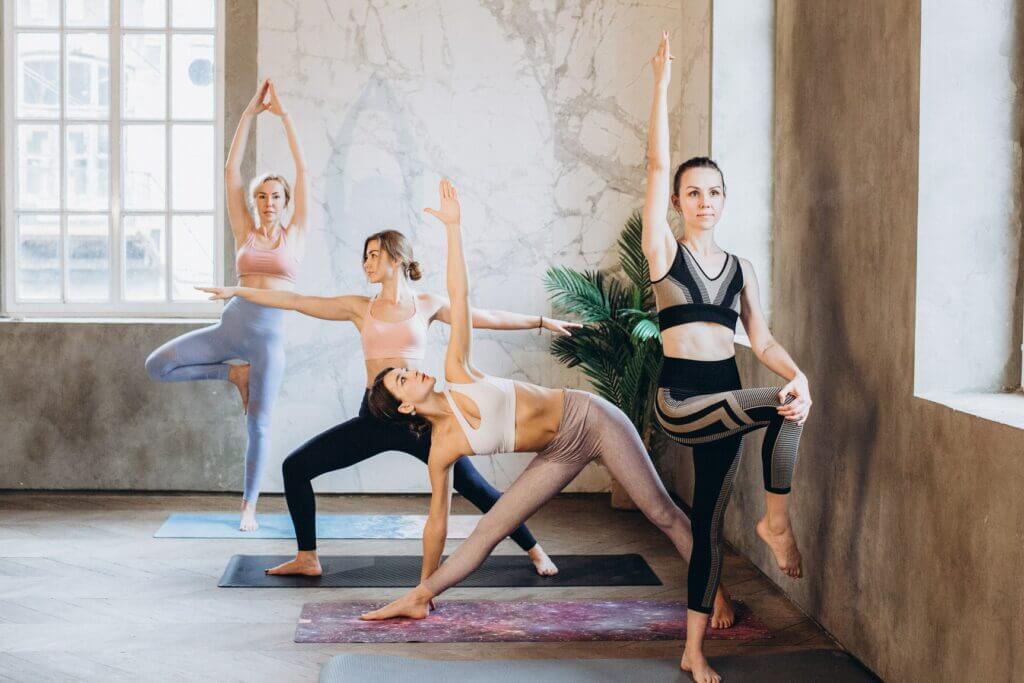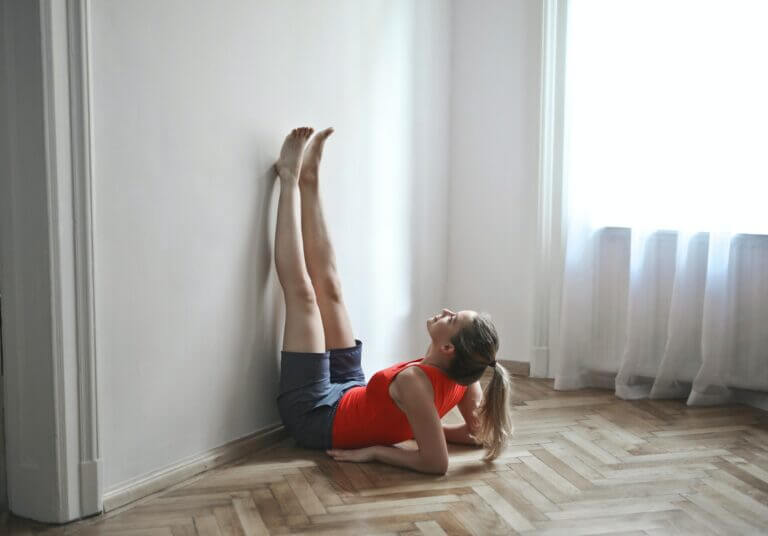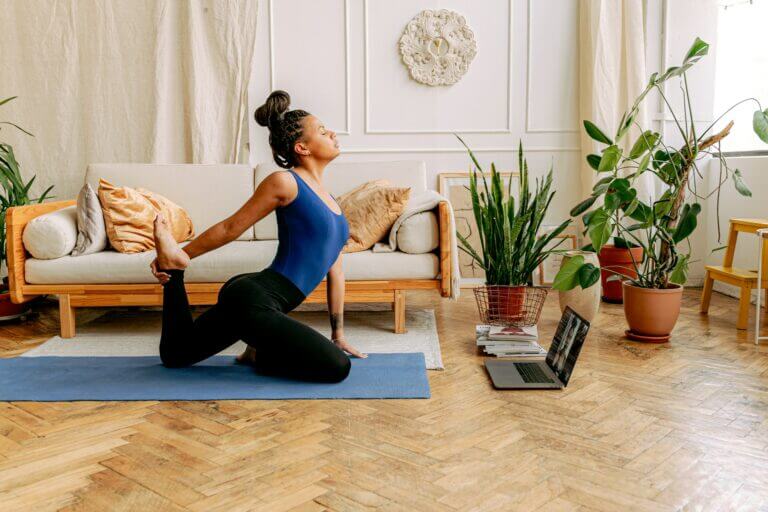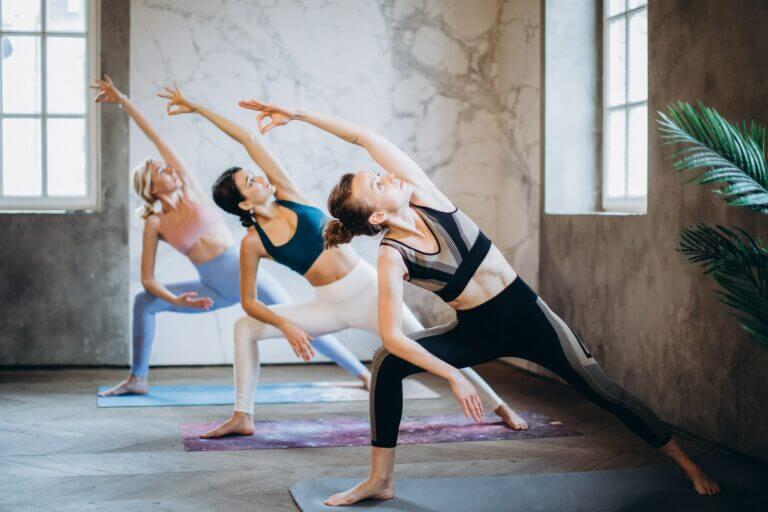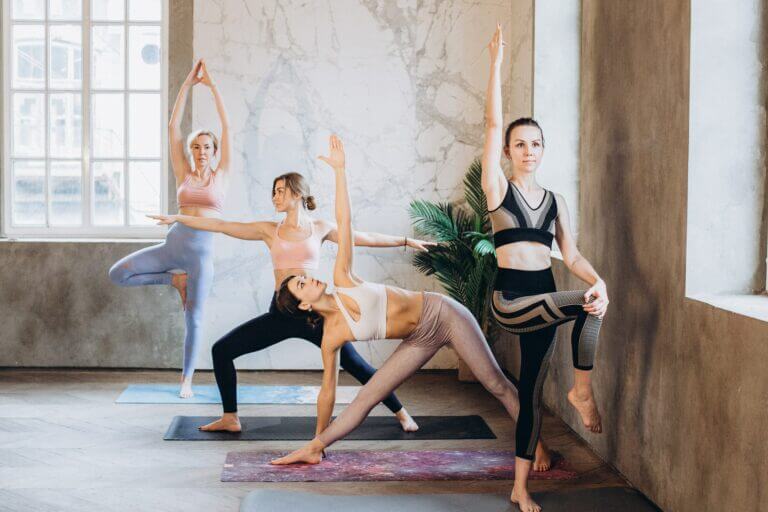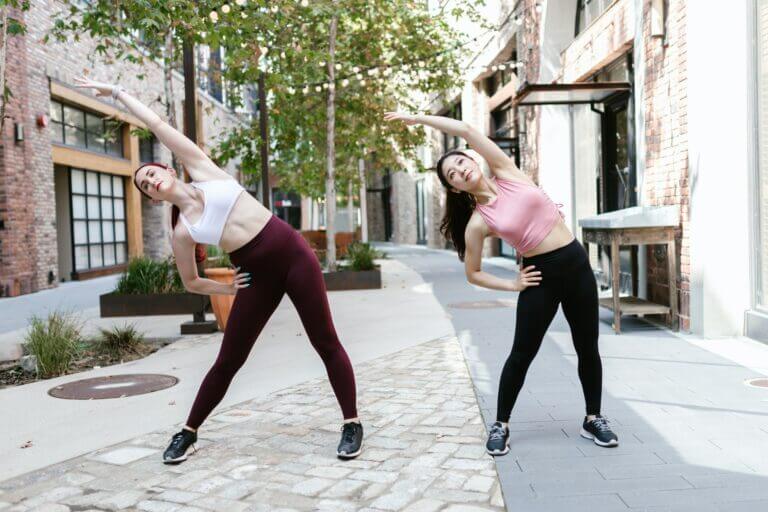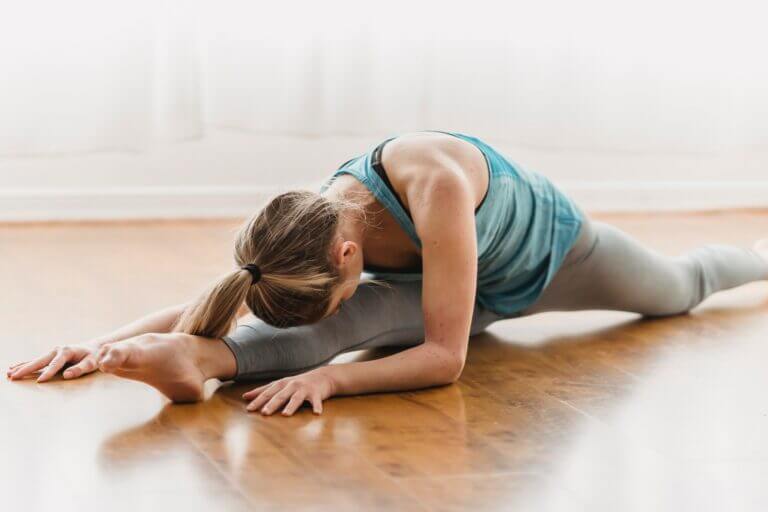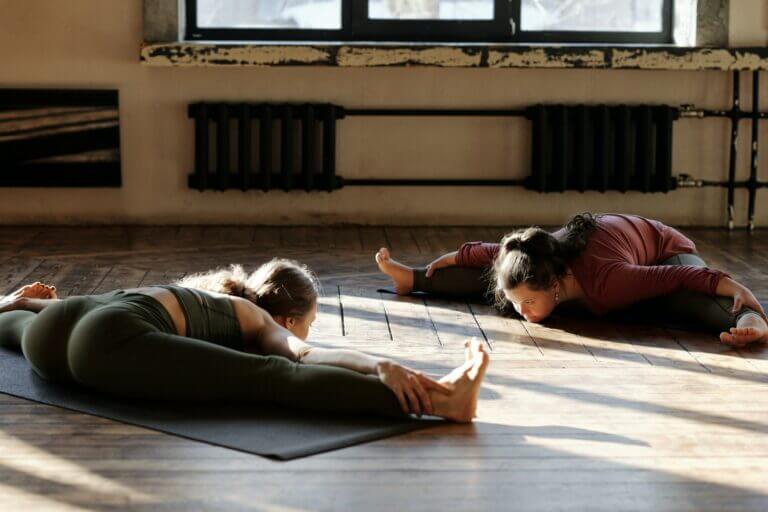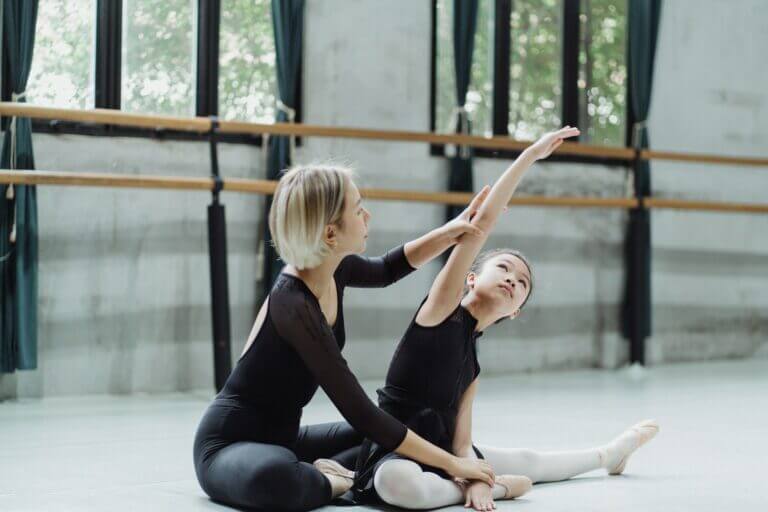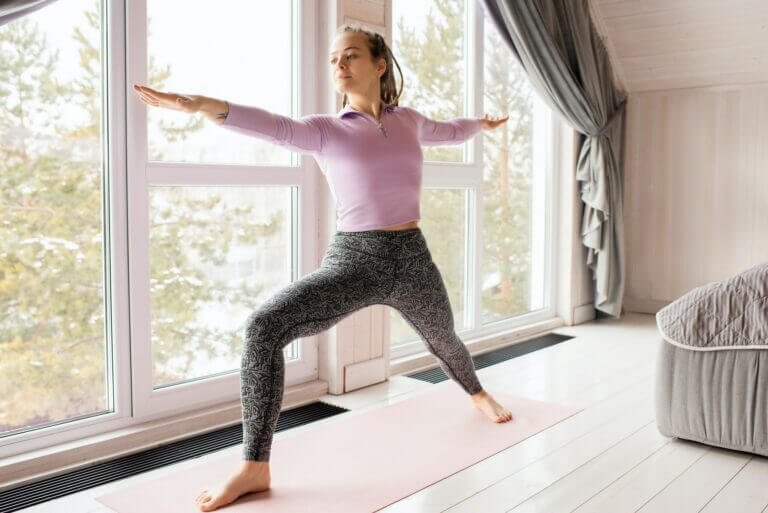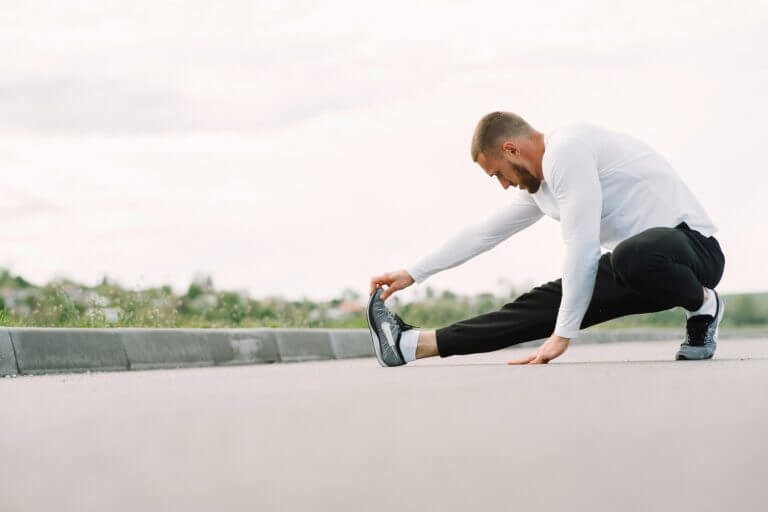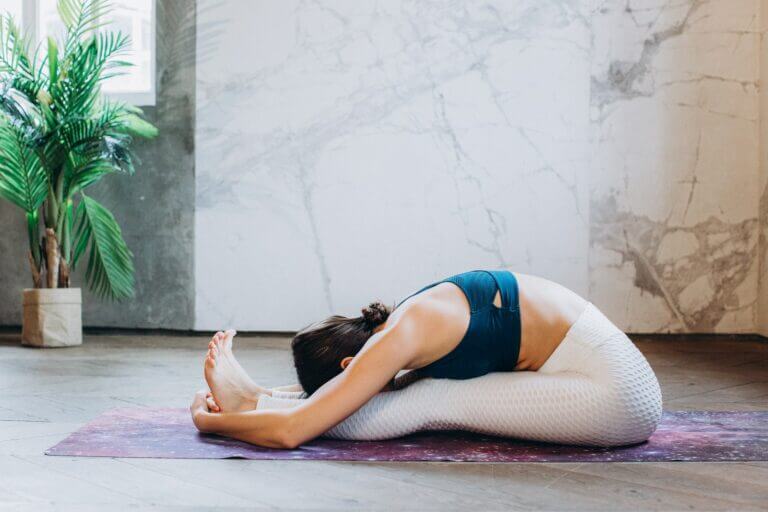Stretching is a great way to de-stress and relax, but it’s also a good way to warm up your body. But how can you warm up and relax at the same time?
The answer lies in the different types of stretching that are meant to achieve different results.
After considering the purposes of these 4 different stretching methods, you can choose the one that best suits your needs and the goal you want to achieve.
Static Stretching vs Passive Stretching
People tend to use the words ‘static’ and ‘passive’ interchangeably, but while similar, they don’t quite mean the same thing.
One easy way to differentiate between the two is that you can do these stretches by yourself without the aid of a partner or the support of props. Passive stretching is the opposite. You’ll need a partner or a prop for passive stretches—note the ‘P’s in the words ‘partner’, ‘prop’ and ‘passive’—although there are a few stretches that can be done alone.
In short, for passive stretches, your partner or prop will be the one exerting pressure on you, while in static stretches, you’re actively holding the muscles in a stretched position.
Both of these stretches are useful when you just want to feel that good stretch in your shoulders or neck after long hours of little movement. For example, when you just woke up or when you get to clock out after work.
Dynamic Stretching
Dynamic stretching, as the name implies, is usually used for warm ups before sports or a workout session in the gym. It involves active movement of the muscles you wish to stretch. You’ll move the muscles at a milder speed and strength, gradually increasing the intensity as your muscles get used to the movement.
However, it’s important not to bounce when you move, as it may lead to accidental injury. This is because you’re forcefully pushing your muscles to go beyond their normal range of motion.
If done right, this form of stretching can reduce your chances of injury, as your muscles are less likely to be pulled or strained. But that doesn’t mean you’ll be invincible to muscle tears, which can happen when you overexert yourself playing the sport or while doing your workout reps.
PNF Stretching (Proprioceptive Neuromuscular Facilitation Stretching)
PNF stands for Proprioceptive Neuromuscular Facilitation Stretching. PNF stretching was originally used in rehabilitation to restore mobility through contract and relax. It is an advanced form of flexibility training. This is because PNF stretching can increase your range of motion and flexibility by strengthening your muscles while you hold the stretch. PNF was initially developed to help rehabilitate patients who need an advanced stretching technique to help stretch a muscle group properly.
PNF stretching is an advanced form of flexibility training that involves contraction and stretching of muscles. Usually, a professional orthopedist will help their patient perform a PNF stretch to loosen their muscles. Still, the common folk can use the technique and theory behind PNF to benefit themselves, as long as they are well-informed about how to safely perform PNF techniques that are excellent for targeting specific muscle groups to increase flexibility.
Prior to stretching, you’ll need to:
- warm-up your muscles before performing PNF stretches
- only use these techniques to target large muscle groups—your hip flexors, hamstrings or glutes
- have at least one rest day between using PNF to loosen the muscles of your body
Now that you’ve identified what separates these stretching techniques from each other, it’s time to see some sample stretches for each category.
Static Stretching Examples

1) Child’s Pose
This is one of the first yoga poses you’ll learn to do, and it stretches your back nicely. This stretch is applied when you want to relieve back pain.
- Sit on the floor, or better, on a yoga mat.
- You’ll want to be sitting on your heels, with the front of your foot flat against the floor.
- Move your knees apart, then roll your torso forward with your arms outstretched.
- Make sure to keep your butt on your heels as you let your forehead rest on the floor.
- Ensure your palms are nice and flat, with all ten fingers splayed out.
- Hold this position for 30 to 60 seconds.
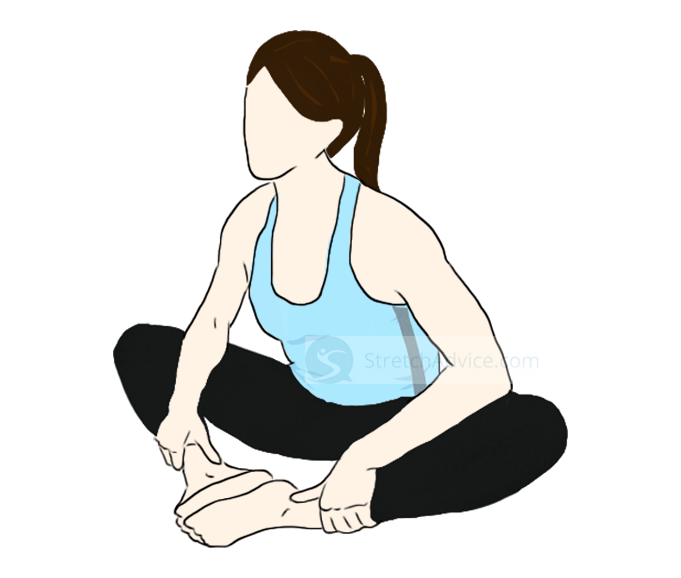
2) Butterfly Stretch
This method of stretching targets the muscles lining your inner thighs, the hamstrings.
- Sit down on the floor, or on a yoga mat.
- Place the soles of your feet flat against each other, bending your knees and keeping your legs close to you.
- Make sure to keep your back straight.
- Using your elbows, push down gently on your knees.
- Don’t forget to breathe as you maintain this position for 15 to 30 seconds.
- Then rest for 10 seconds before repeating 3 more times.
Passive Stretching Examples
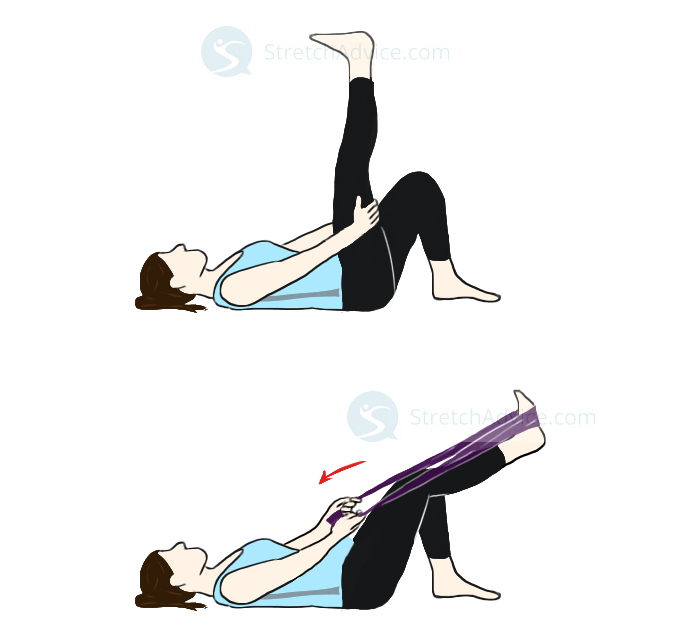
1) Supine Single Leg Stretch
You can do this stretch alone or with a partner. It targets your inner thighs and may increase muscular function.
- Lie down on your back and raise your right leg, keeping your back and leg straight.
- Bend the knee of your left leg and place your left foot on the floor.
- Interlace your hands behind your right thigh, or use a yoga strap and wrap it around the sole of your right foot. Additionally, you can get your partner to exert this pressure on your leg for you.
- Pull your leg toward your body while you push back against the pressure, resisting the movement.
- Hold this position for 20 to 60 seconds, making sure to breathe.
- Slowly let go of your leg and switch sides.
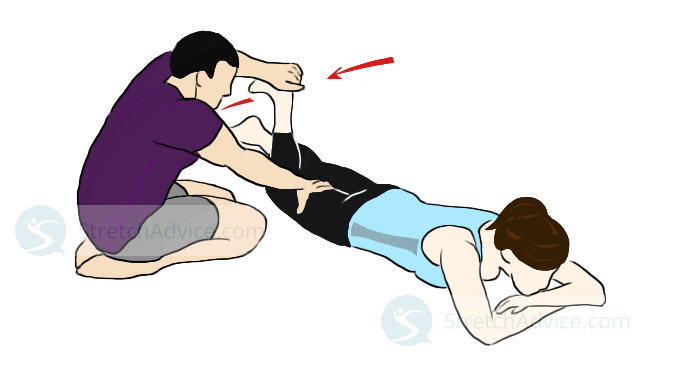
2) Quadriceps Stretch (with a partner)
This stretch requires a partner and targets the quadriceps in your legs.
- Lie down on your stomach with both legs extended behind you. Your partner will be positioned near your legs.
- Have your partner gently move your foot up toward your butt, bending your knee in the process.
- Gently push against this resistance for 5 to 8 seconds.
- Relax and rest for 10 seconds.
- Have your partner repeat the action another 2 to 3 more times.
- Switch to the other leg.
Dynamic Stretching Examples
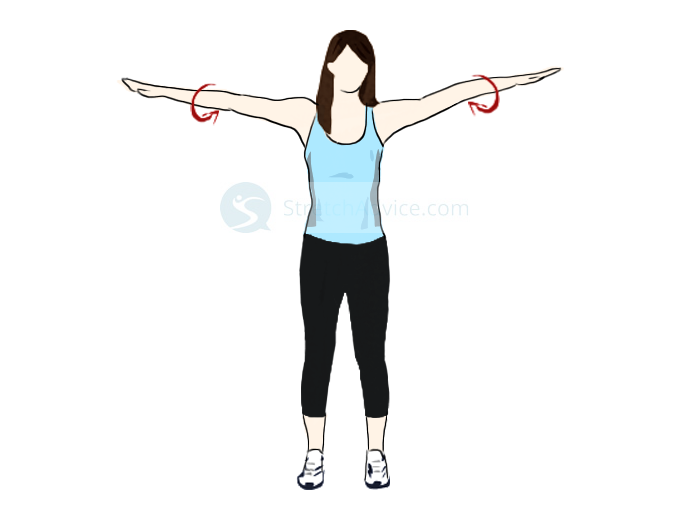
1) Arm Circles
This will warm up your shoulder muscles, which is great since your arms are one of the most frequently used limbs.
- Stand up tall, making sure that your spine is straight.
- Raise both arms out to your sides at shoulder height.
- Moving your shoulders in one direction, imagine you’re drawing circles in the air with your arms. Make sure to only move your shoulders!
- Start with smaller circles first, then slowly increase the diameter.
- Change directions after approximately 30 seconds.
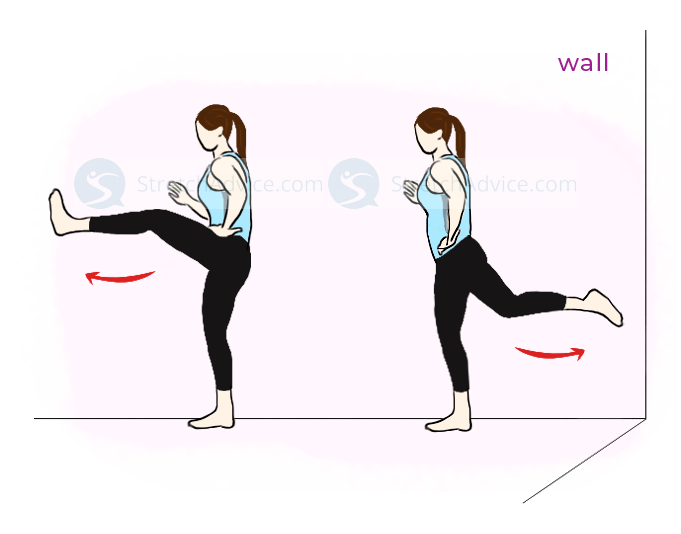
2) Leg Swings
This will loosen up the joint between your thigh and your hips! You’re stretching the small muscles that are connected to each other to for a large muscle group. It can improve performance when you are about to engage in some athletic sport activities.
- Stand up, making sure there’s sufficient space around you.
- Balance yourself on the heel of one leg, while you raise your other leg off the ground.
- Begin swinging your leg to the side slowly—imagine it’s a pendulum that’s slowly gaining momentum.
- Keep your back straight, and hold onto a nearby table or wall if you need support.
- Gaining momentum, you can swing it farther to the sides with each move.
- Continue swinging for about 20 to 30 seconds.
- Switch legs.
PNF Stretching Examples
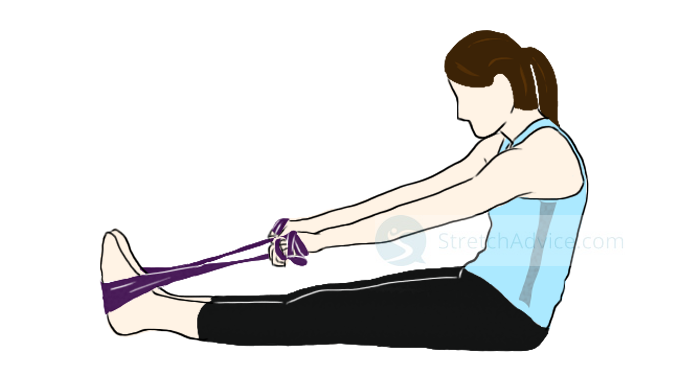
1) Partner Leg Stretch
This lower body stretch can be done with the help of a partner, or with a yoga strap to provide the necessary tension. This stretch will increase your flexibility and range of motion.
- Sit on the floor with your back straight, legs extended in front of you. Your partner should be positioned at the ends of your feet.
- Have your partner push your feet toward your body for 10 seconds. If you don’t have a partner, you can wrap a yoga strap around the soles of both feet and pulling them toward your body.
- Now push against the force coming from your partner for 5 seconds.
- Breathe and move your toes so they point toward your body for 30 seconds.
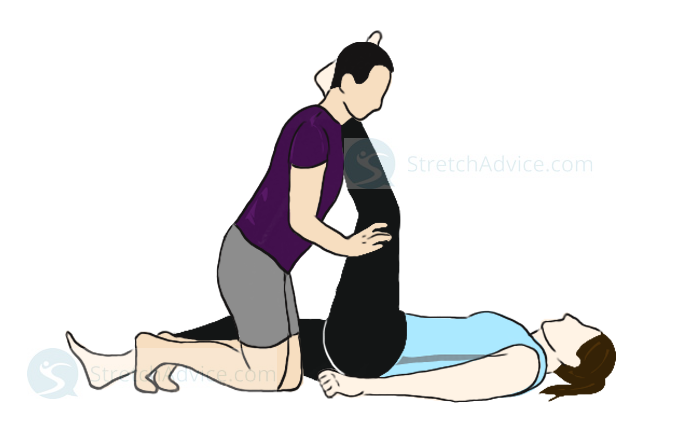
2) Partner Leg Hamstring Stretch
This stretch will give you a temporary increased range of motion in your thighs and hip flexion muscles, and is usually performed by a professional. Of course, you can also get a trusted friend or your partner to help you perform this stretch. Relax your muscles and allow your partner to stretch your limbs gently.
- Lie down on a yoga mat, arms and legs straight. Your partner will be kneeling facing you near your thighs.
- Have your partner lift your leg up and brace the limb against their shoulder, while placing their hands on your upper thigh for more support.
- Keep your knee straight as they push your leg toward you slowly.
- Tell your partner when you feel a bit of pressure in your hamstrings. This will be the starting point.
- Have your partner push your leg gently toward you, while you use 20 to 30% of your strength to resist the pressure coming from your partner. Hold this position for 10 seconds.
- Now, release and rest for 12 seconds.
- Your partner can now push your leg slightly further toward you compared to your starting point.
- Repeat the steps one more time from this new angle.
Safety Measures To Take Note Of
Keep in mind that stretching doesn’t hurt. Like at all. It’s not supposed to, so if it does, then that’s a clear indicator for you to stop.
Take a deep breath, and ease back into the stretch slowly, careful not to bounce or make any sudden movements. And if it still hurts, it’s best to stop.
There’s no need to rush when doing stretches, so just take it one step at a time. Always make sure to seek out a professional physical therapist or personal trainer to make sure that you are doing the moves correctly. That way, you can be sure that you won’t end up hurting yourself when you do your personal training.
More About PNF And The Benefits Of PNF Stretching
The PNF stretching technique was originally developed as a form of rehabilitation, where the patient will passively stretch their muscles through stretching and contracting with the help of a partner. It is said that PNF stretching is superior as it may be the most effective form of assisted stretching. Studies have shown that PNF is the most effective stretching technique when the aim is to increase your passive range of motion (ROM) and to increase muscular strength.
In short, PNF stretching works on the basis of a protective reflex, called the inverse myotatic reflex, that relaxes our muscles when our brain senses the muscle is going to tear. Stretching and holding the position to touch the muscle group being targeted for a few seconds will bring relief to your taut muscles once your brain kicks in and sends the signal for the muscle to relax.
PNF stretching requires the help of a partner or an inanimate object. There are many variations of principles behind PNF stretching and it can often be referred to as different things. The two most common techniques that some of you might have heard of are: contract-relax method (CR) or hold-relax stretching and contract-relax-antagonist-contract method (CRAC). The hold-relax with agonist contraction technique is identical to hold-relax in the first two phases. For example, you can alternate between a static stretch-and-hold and an isometric contraction of the muscle being stretched.
During both the stretching and the contraction phase of the PNF stretch you don’t have to apply maximum force or intensity. In fact, it works best when a gentle stretch and contraction is used on the target muscle group.
But, as with any other stretching methods, there are risks to doing PNF exercises. Some of the risks of PNF include an increased risk of easily twisting and tearing your muscles if you have no experience with it and end up doing it wrong. It could also contribute to damage in the developing muscles of young, growing children, so you should stay away from PNF stretching if your body hasn’t stopped developing yet.
The Takeaway
Now that you’ve learned the differences between these four styles of stretches, you can pick and mix between these stretches to fit your needs and goals. If you want to gain flexibility, PNF stretching will be better suited for your needs.
Just make sure to take good care of your body and don’t push yourself too hard!

